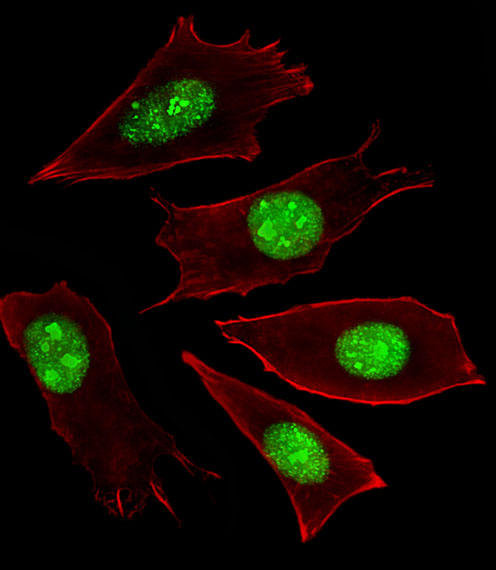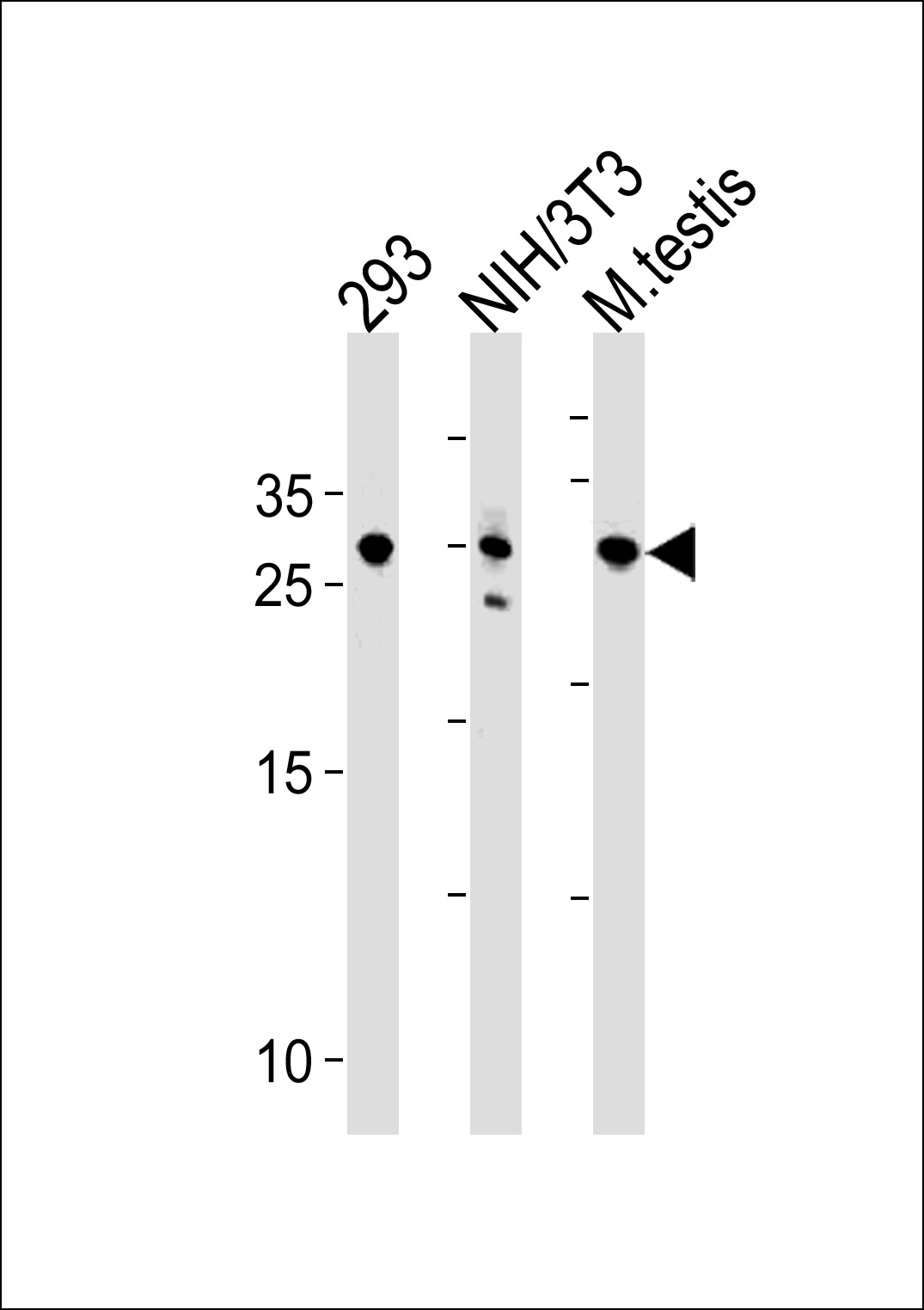RNF166 Antibody (Center)
Affinity Purified Rabbit Polyclonal Antibody (Pab)
- SPECIFICATION
- CITATIONS: 2
- PROTOCOLS
- BACKGROUND

Application
| IF, WB, E |
|---|---|
| Primary Accession | Q96A37 |
| Other Accession | Q6J1I7, Q3U9F6 |
| Reactivity | Human, Mouse |
| Predicted | Rat |
| Host | Rabbit |
| Clonality | Polyclonal |
| Isotype | Rabbit IgG |
| Calculated MW | 26122 Da |
| Antigen Region | 71-97 aa |
| Gene ID | 115992 |
|---|---|
| Other Names | RING finger protein 166, RNF166 |
| Target/Specificity | This RNF166 antibody is generated from rabbits immunized with a KLH conjugated synthetic peptide between 71-97 amino acids from the Central region of human RNF166. |
| Dilution | IF~~1:25 WB~~1:1000 E~~Use at an assay dependent concentration. |
| Format | Purified polyclonal antibody supplied in PBS with 0.09% (W/V) sodium azide. This antibody is purified through a protein A column, followed by peptide affinity purification. |
| Storage | Maintain refrigerated at 2-8°C for up to 2 weeks. For long term storage store at -20°C in small aliquots to prevent freeze-thaw cycles. |
| Precautions | RNF166 Antibody (Center) is for research use only and not for use in diagnostic or therapeutic procedures. |
| Name | RNF166 |
|---|---|
| Function | E3 ubiquitin-protein ligase that promotes the ubiquitination of different substrates (PubMed:27880896). In turn, participates in different biological processes including interferon production or autophagy (PubMed:26456228, PubMed:27880896). Plays a role in the activation of RNA virus-induced interferon-beta production by promoting the ubiquitination of TRAF3 and TRAF6 (PubMed:26456228). Also plays a role in the early recruitment of autophagy adapters to bacteria (PubMed:27880896). Mediates 'Lys-29' and 'Lys-33'-linked ubiquitination of SQSTM1 leading to xenophagic targeting of bacteria and inhibition of their replication (PubMed:27880896). |
| Cellular Location | Cytoplasm. |

Provided below are standard protocols that you may find useful for product applications.
References
Ota T., et al. Nat. Genet. 36:40-45(2004).
Mural R.J., et al. Submitted (SEP-2005) to the EMBL/GenBank/DDBJ databases.
If you have used an Abcepta product and would like to share how it has performed, please click on the "Submit Review" button and provide the requested information. Our staff will examine and post your review and contact you if needed.
If you have any additional inquiries please email technical services at tech@abcepta.com.














 Foundational characteristics of cancer include proliferation, angiogenesis, migration, evasion of apoptosis, and cellular immortality. Find key markers for these cellular processes and antibodies to detect them.
Foundational characteristics of cancer include proliferation, angiogenesis, migration, evasion of apoptosis, and cellular immortality. Find key markers for these cellular processes and antibodies to detect them. The SUMOplot™ Analysis Program predicts and scores sumoylation sites in your protein. SUMOylation is a post-translational modification involved in various cellular processes, such as nuclear-cytosolic transport, transcriptional regulation, apoptosis, protein stability, response to stress, and progression through the cell cycle.
The SUMOplot™ Analysis Program predicts and scores sumoylation sites in your protein. SUMOylation is a post-translational modification involved in various cellular processes, such as nuclear-cytosolic transport, transcriptional regulation, apoptosis, protein stability, response to stress, and progression through the cell cycle. The Autophagy Receptor Motif Plotter predicts and scores autophagy receptor binding sites in your protein. Identifying proteins connected to this pathway is critical to understanding the role of autophagy in physiological as well as pathological processes such as development, differentiation, neurodegenerative diseases, stress, infection, and cancer.
The Autophagy Receptor Motif Plotter predicts and scores autophagy receptor binding sites in your protein. Identifying proteins connected to this pathway is critical to understanding the role of autophagy in physiological as well as pathological processes such as development, differentiation, neurodegenerative diseases, stress, infection, and cancer.


